 |
Prof. Dr. Hab. Jean-Charles PINOLI | 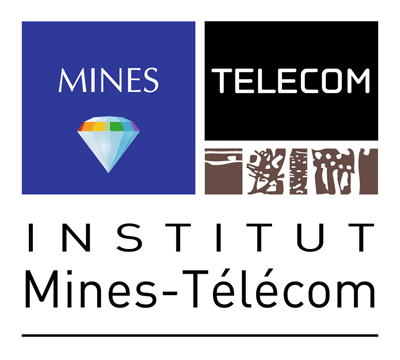 |
|
LIP: Logarithmic Image Processing
|
The Logarithmic Image Processing (LIP) approach is a mathematical
framework, introduced in the middle of the 1980's, based on abstract linear mathematics which provides a set of
specific algebraic and functional operations that can be applied to the
processing of intensity images valued in a bounded range. The LIP approach
has been proved to be physically justified in the setting of
transmitted and reflected light imaging, and to be consistent with several laws and
characteristics of the human brightness perception. Successful application
examples have also been reported in several image processing areas,
e.g., image enhancement, image filtering, image restoration, three-dimensional image
reconstruction, edge detection and image segmentation.
|
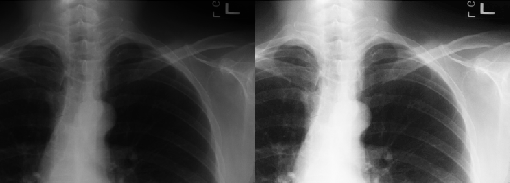
|
CoLIP: Color Logarithmic Image Processing
|
The Color Logarithmic Image Processing (CoLIP) is a recently introduced (2011) extension of the LIP mathematical
framework based on abstract linear mathematics which provides a set of
specific algebraic and functional operations that can be applied to the
processing of color images valued in a bounded range. The CoLIP approach
has been proved to be psycho-physically consistent with several laws and
characteristics of the human color perception. A first successful application
example has been recently reported on the white balance correction in color images.
|
 
|
GANIP: General Adaptive Neighborhood Image Processing
|
The General Adaptive Neighborhood Image Processing (GANIP) is a mathematical
framework, introduced in the middle of the 2000's, and based on based on abstract linear mathematics and generalized topology, for adaptive processing and analysis of gray-tone images. An
intensity image is represented with a set of local neighborhoods
defined for each pixel of the image to be studied. Those so-called
General Adaptive Neighborhoods (GANs) are simultaneously adaptive with
the spatial structures, the analyzing scales and the physical settings
of the image to be addressed and/or the human visual system.
The GANs are then used as adaptive operational windows for
local image transformations (morphological filters, rank/order filters,
...) and for local image analysis (local descriptors, ...). Successful application
examples have also been reported in several image processing areas,
e.g., image enhancement, image filtering, image restoration, image focus measurement, edge detection and image segmentation.
|
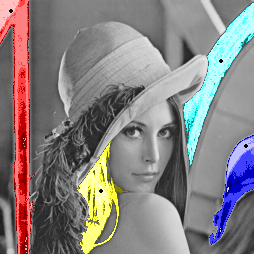 |
IGIASP: Integral Geometric Image Analysis of Spatial Patterns
|
The
Integral Geometric Image Analysis of Spatial Patterns (IGIASP) is a
recently developed (2008) research topic. It aims at modeling and analyzing spatial
structures within binary or gray-tone images. The concepts and tools
are based on: - integral geometry (e.g., Cauchy-Crofton formulas or
Minkowski
functionals: area, perimeter and connectivity number for 2D fields;
volume,
surface area, mean breadth and connectivity number for 3D fields), -
mathematical morphology (e.g., openings and closures, skeletons,
watersheds, granulometry) and - geometric measure theory (e.g.,
Minkowski content and Weyl-Steiner formulas). Successful application
examples have been reported in gray tone image characterization.
|
 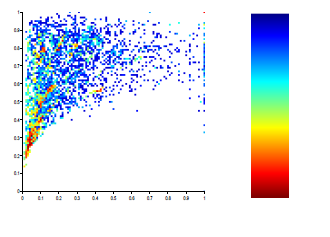 |
GeoMoRF: Geometry and Morphology of Random Fields
| The Geometric and Morphological Analysis of Random Fields (GeoMorRF) deals with the geometric, morphological and topological analysis and modeling of random fields. Random fields are random functions defined on a spatial domain that can be used to analyze and modelize images, textures, surfaces, ... The main studied random fields are the Gaussian, student t, chi2, Hotelling t2 and F fields. Linear weighted combinations of such fields are also investigated. The concepts and tools are based on: - random fields theory (covariance function, statistical moments including the skewness and kurtosis), - integral geometry (e.g., Minkowski functionals: area, perimeter and connectivity number for 2D fields; volume, surface area, mean breadth and connectivity number for 3D fields), and - mathematical morphology (e.g., openings and closures, skeletons, watersheds, granulometry). Successful application examples have been reported in surface texture and roughness measurements. |
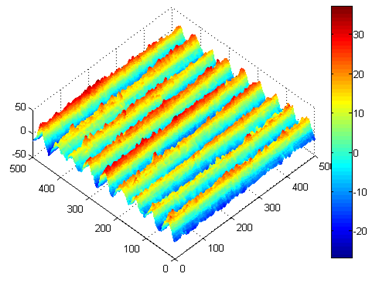 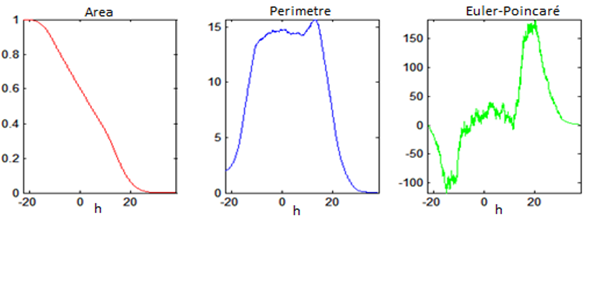
|
MoD3: Morphological Descriptors, Diagrams and Distances
| The Morphological Descriptors, Diagrams and Distances (MoD3) research topic (started in 2007) deals with the morphometrical analysis of spatial patterns. Shape diagrams are an original concept that allows representing a single shape (i.e., mathematically a connected compact set) as a point in the 2D plane unit square. They can be viewed as tools for shape discrimination. Successful application examples have been reported in gray tone image shape measurement without any segmentation. An original contribution has been reported in quantitative projective stereology allowing the 3D geometrical characterization of convex objects by means of 2D measurements on a few projected figures. The quantitative analysis of the "proximity" between shapes and more generally spatial structures is also addressed. As an example, a geometric dissimilarity criterion (the epsilon criterion) between mosaics has been recently introduced. It can be also successfully applied to quantify binary images resulting from different segmentation processes |
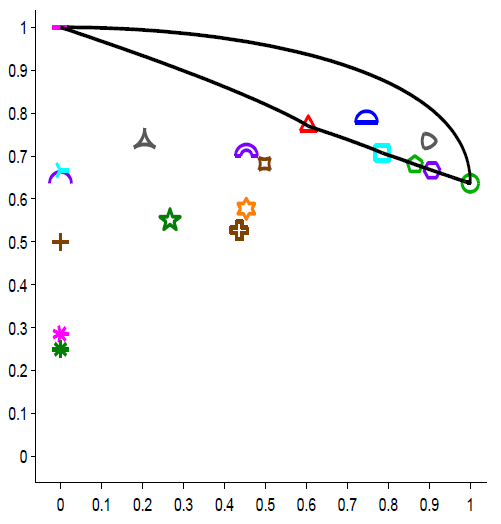
|


